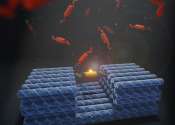Communication between rotors in molecular motor observed for the first time
A pair of chemists at the University of Groningen in the Netherlands, has observed communication between rotors in a molecular motor. In their study, reported in the Journal of the American Chemical Society, Carlijn van Beek ...









